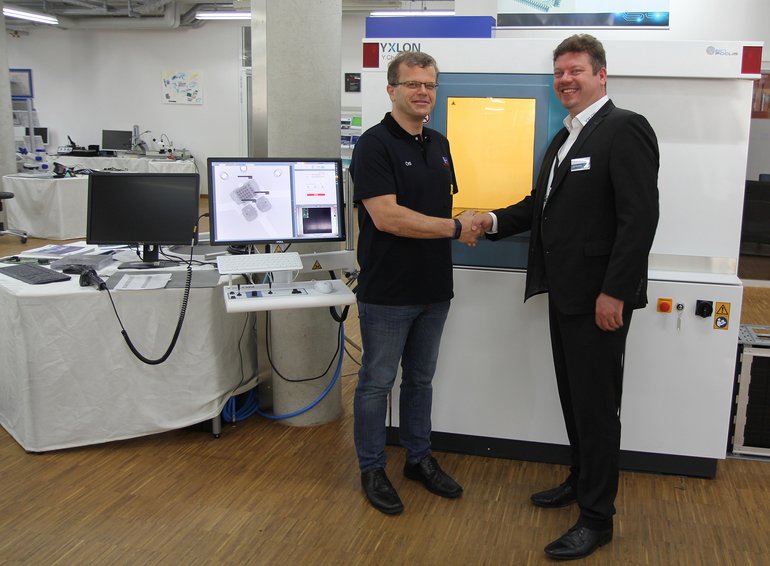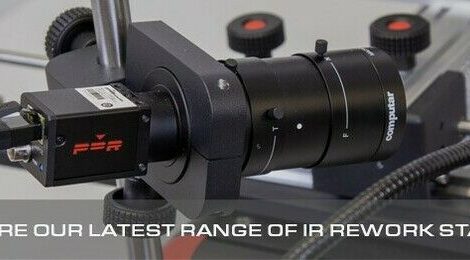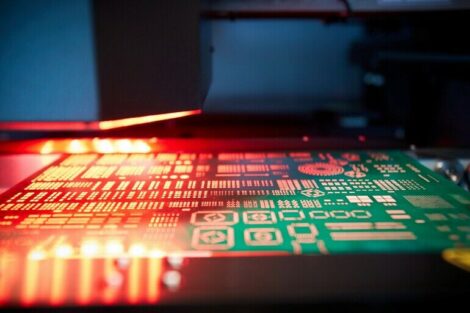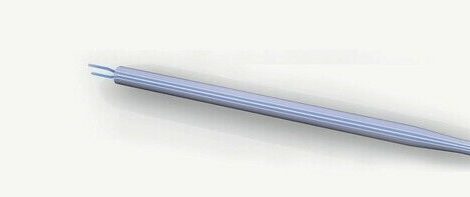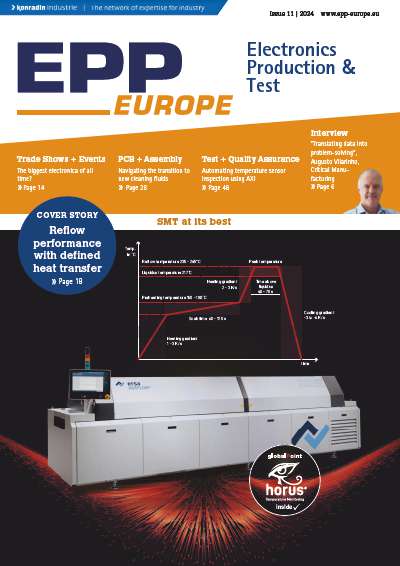If you think that CT-X-ray examinations are used only in the medical field, you’re very much mistaken. These X-ray inspection systems were introduced into the electronics and semiconductor industry long ago. X-ray analysis of circuit boards has now become one of the most important methods in the manufacturing process for quality assurance of soldering, to visually check for pores and voids. The next step is analysis using 3D methods such as laminography and computer tomography. Customers are now able to closely examine their boards in the Technology Center at Rehm Thermal Systems, using the Y Cheetah μHD CT X-ray inspection system from Yxlon.
Voids have a huge effect on the quality of the solder joint, so automotive manufacturers are increasingly setting acceptance limits on components. The company’s Technology Center offers customers the opportunity to thoroughly inspect boards and jointly perfect their processes. A wide range of SMD and inspection equipment can be used under professional supervision for fault management. Solder joints can be examined in detail using the μ HD X-ray inspection system. The system enables high-resolution, non-destructive, real-time microfocus X-ray inspection of components and sub-assemblies, circuit boards, electronic and mechanical modules, sensors, MEMS and MOEMS, as well as electromechanical components and connectors. It combines several innovative developments, such as fine-focus tube technology, a high-power target, a latest generation long-life finely calibrated flat detector and a manipulator with vibration damping, as well as eHDR inspection, micro CT and micro-laminography.
“Among other things, the radiographs help to evaluate the soldering quality and the void rates. Afterwards, we can make a decision with the customer as to whether any further vacuum processes are necessary and make fine adjustments to these processes. This offers a wide range of manual and automatic inspection opportunities, such as distance measurements, layer assembly, BGA solder joint analysis as well as close inspections of the solder that don’t interfere with structures of components, conductor tracks, substrates and much more.”, emphasises Helmut Öttl, Head of Process Development/Application.
Using laminography, it is possible to generate precise layer images of larger or double-sided printed circuit boards as well as of multilayer semiconductor components. In particular, however, industrial computer tomography offers three-dimensional insights into test parts and thus facilitates the analysis of internal structures, dimensional measurements or set-point comparisons to CAD data. In addition to this, computer tomography also provides valuable information for the production process and enables detailed insights into the finest structures and smallest components.
The cooperation between Rehm and Yxlon is the ideal basis for further joint projects with regard to vacuum technology, fault analysis and test methods.
www.rehm-group.com; www.yxlon.de




